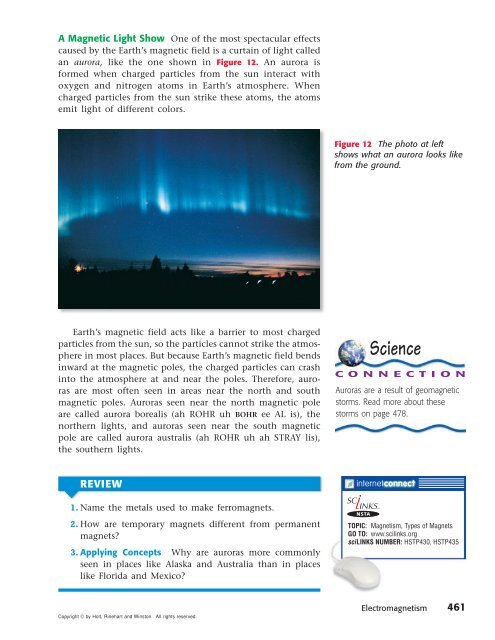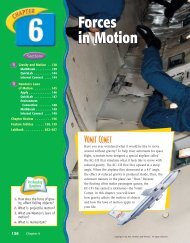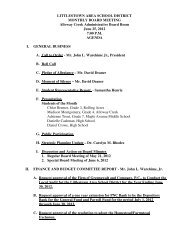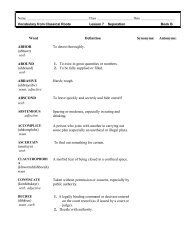Electromagnetism Electromagnetism
Electromagnetism Electromagnetism
Electromagnetism Electromagnetism
You also want an ePaper? Increase the reach of your titles
YUMPU automatically turns print PDFs into web optimized ePapers that Google loves.
A Magnetic Light Show One of the most spectacular effects<br />
caused by the Earth’s magnetic field is a curtain of light called<br />
an aurora, like the one shown in Figure 12. An aurora is<br />
formed when charged particles from the sun interact with<br />
oxygen and nitrogen atoms in Earth’s atmosphere. When<br />
charged particles from the sun strike these atoms, the atoms<br />
emit light of different colors.<br />
Earth’s magnetic field acts like a barrier to most charged<br />
particles from the sun, so the particles cannot strike the atmosphere<br />
in most places. But because Earth’s magnetic field bends<br />
inward at the magnetic poles, the charged particles can crash<br />
into the atmosphere at and near the poles. Therefore, auroras<br />
are most often seen in areas near the north and south<br />
magnetic poles. Auroras seen near the north magnetic pole<br />
are called aurora borealis (ah ROHR uh BOHR ee AL is), the<br />
northern lights, and auroras seen near the south magnetic<br />
pole are called aurora australis (ah ROHR uh ah STRAY lis),<br />
the southern lights.<br />
REVIEW<br />
1. Name the metals used to make ferromagnets.<br />
2. How are temporary magnets different from permanent<br />
magnets?<br />
3. Applying Concepts Why are auroras more commonly<br />
seen in places like Alaska and Australia than in places<br />
like Florida and Mexico?<br />
Copyright © by Holt, Rinehart and Winston. All rights reserved.<br />
Figure 12 The photo at left<br />
shows what an aurora looks like<br />
from the ground.<br />
Science<br />
CONNECTION<br />
Auroras are a result of geomagnetic<br />
storms. Read more about these<br />
storms on page 478.<br />
NSTA<br />
TOPIC: Magnetism, Types of Magnets<br />
GO TO: www.scilinks.org<br />
sciLINKS NUMBER: HSTP430, HSTP435<br />
<strong>Electromagnetism</strong> 461





